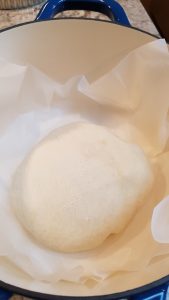
After a few months of being happily distracted and out of my routine, I’m back at my desk enjoying the pleasures of writing, reading, and tending to simple tasks. It’s the old Zen proverb in action: ‘Before enlightenment, chop wood and carry water. After enlightenment, chop wood and carry water.’
Cue enlightenment. Last weekend I took a writing workshop from Becca Puglisi (for any writers reading this, do yourself a favor and google books by Becca Puglisi and her writing partner, Angela Ackerman; one of my favorites is The Emotional Wound Thesaurus: A Writer’s Guide to Psychological Trauma).
Last weekend’s workshop was on hidden emotions and subtext. Puglisi showed us how to convey, through dialogue, what our characters are hiding and not saying. We all hide our emotions at times, Puglisi maintained. And we all lie at times too, she added.
Frankly, this didn’t sit well with me. Wouldn’t life be easier if we shared honestly and openly, but with respect? It might not shape tension in a novel, but when it comes to life, I value transparency. I connect it with integrity, something that’s also important to me.
I thought about our recent month in Japan. Instead of showing their real feelings, Japanese people usually use tatemae in public. Tatemae (建前) literally means ‘built in front.’ It refers to the facade people put in front of others to please them or avoid confrontation, and it often contradicts their true feelings. We were warned about this very thing from someone who had lived in Japan for several years. “Be careful asking for directions,” they said, “because even if someone doesn’t have an answer, they may use tatemae and point you in the wrong direction.” And that’s exactly what happened multiple times. We would carefully follow the directions we were given only to become hopelessly lost and taken further afield from our destination. It would have been much easier for us if people had simply said ‘I don’t know.’ However, it wouldn’t have been easier for them because there’s a high cultural value on saving face in Japan.
Still, that’s Japan I told myself. It’s different in North America.
Or is it?
Puglisi, who lives in Florida, used the example of a single mother who holds differing political views from her coworkers and refrains from sharing them for fear of repercussions like losing her job and being unable to feed her kids. Or a man who lies outright to his sister about his political affiliations because if he shared honestly, he wouldn’t be allowed at his dying mother’s bedside.
Those are extreme cases. That’s not the norm, I told myself. Yet the same political divide is happening in Canada. The same issues are cropping up here.
“We all lie at times,” Puglisi repeated. “We all hide our emotions, mask judgements, water down opinions, hold back information, redirect and control conversations. Those are all forms of lying.”
Framed that way, I was better able to relate to the point Puglisi was making.
For instance, my daughter recently took my five-year-old grandson for his shot. She knew it would hurt; she expected him to scream (and scream he did) but she masked her emotions because her getting upset would only add to his distress. In another instance, when pressed by one family member about the romantic inclinations of another family member, I was anything but transparent. I deliberately withheld information that wasn’t mine to give, redirecting the conversation to something more mundane.
A lack of transparency, concealing things, is not only an option at times, sometimes it is the best option. Unless, of course, you’re lost in the middle of Tokyo and desperately need help finding your way. Then I’m all for transparency. Or calling a cab.




 It’s NaNoWriMo, or national novel writing month. For those who don’t know, NaNoWriMo participants attempt to write a 50,000-word manuscript between November 1 and November 30. There are many support groups on line with members offering encouragement and holding each other accountable. NaNoWriMo is a great way to immerse yourself in a project, boost your writing output and end the month with a sense of accomplishment.
It’s NaNoWriMo, or national novel writing month. For those who don’t know, NaNoWriMo participants attempt to write a 50,000-word manuscript between November 1 and November 30. There are many support groups on line with members offering encouragement and holding each other accountable. NaNoWriMo is a great way to immerse yourself in a project, boost your writing output and end the month with a sense of accomplishment. Last week, I finished doing a substantive revision on No Right Thing. Revising, as I’ve said before, is one of my favorite parts of the writing process. Polishing and tweaking can take a story from good to great, and I think No Right Thing is one of the best YA novels I’ve written so far. A big shout out to Melanie Jeffs at Crwth Press for comments and suggestions that gave me the springboard I needed to dive in and make some changes.
Last week, I finished doing a substantive revision on No Right Thing. Revising, as I’ve said before, is one of my favorite parts of the writing process. Polishing and tweaking can take a story from good to great, and I think No Right Thing is one of the best YA novels I’ve written so far. A big shout out to Melanie Jeffs at Crwth Press for comments and suggestions that gave me the springboard I needed to dive in and make some changes.
 For the most part, I’m fairly disciplined with respect to my writing. It’s my day job; I show up at the same time five mornings a week and I write. I got into the habit when my kids were young and I’ve kept it up. If I’m on deadline, that writing often spills into the afternoons. If I’m not on deadline and providing I’ve already written a decent number of pages, then I’ll sometimes switch gears in the afternoon and do an editing job or research, respond to emails, or deal with any current business issues.
For the most part, I’m fairly disciplined with respect to my writing. It’s my day job; I show up at the same time five mornings a week and I write. I got into the habit when my kids were young and I’ve kept it up. If I’m on deadline, that writing often spills into the afternoons. If I’m not on deadline and providing I’ve already written a decent number of pages, then I’ll sometimes switch gears in the afternoon and do an editing job or research, respond to emails, or deal with any current business issues. Our lunch was winding down but our beginning writer friend had several more questions. What, she asked, is the one habit that most effectively supports your writing career?
Our lunch was winding down but our beginning writer friend had several more questions. What, she asked, is the one habit that most effectively supports your writing career? It’s time for more questions from our new writer and answers from more seasoned ones. This week: what lessons did I learn the hard way, and what did I wish I knew starting out?
It’s time for more questions from our new writer and answers from more seasoned ones. This week: what lessons did I learn the hard way, and what did I wish I knew starting out? Not long ago, I was asked by a woman just starting out on her writing journey if I’d be willing to answer a few general questions about the industry, and some specific questions about my path to publishing. Our conversation really made me think. Over the next few weeks I’ll bring you some of her questions and my answers, along with answers from other authors as well.
Not long ago, I was asked by a woman just starting out on her writing journey if I’d be willing to answer a few general questions about the industry, and some specific questions about my path to publishing. Our conversation really made me think. Over the next few weeks I’ll bring you some of her questions and my answers, along with answers from other authors as well.
Comments